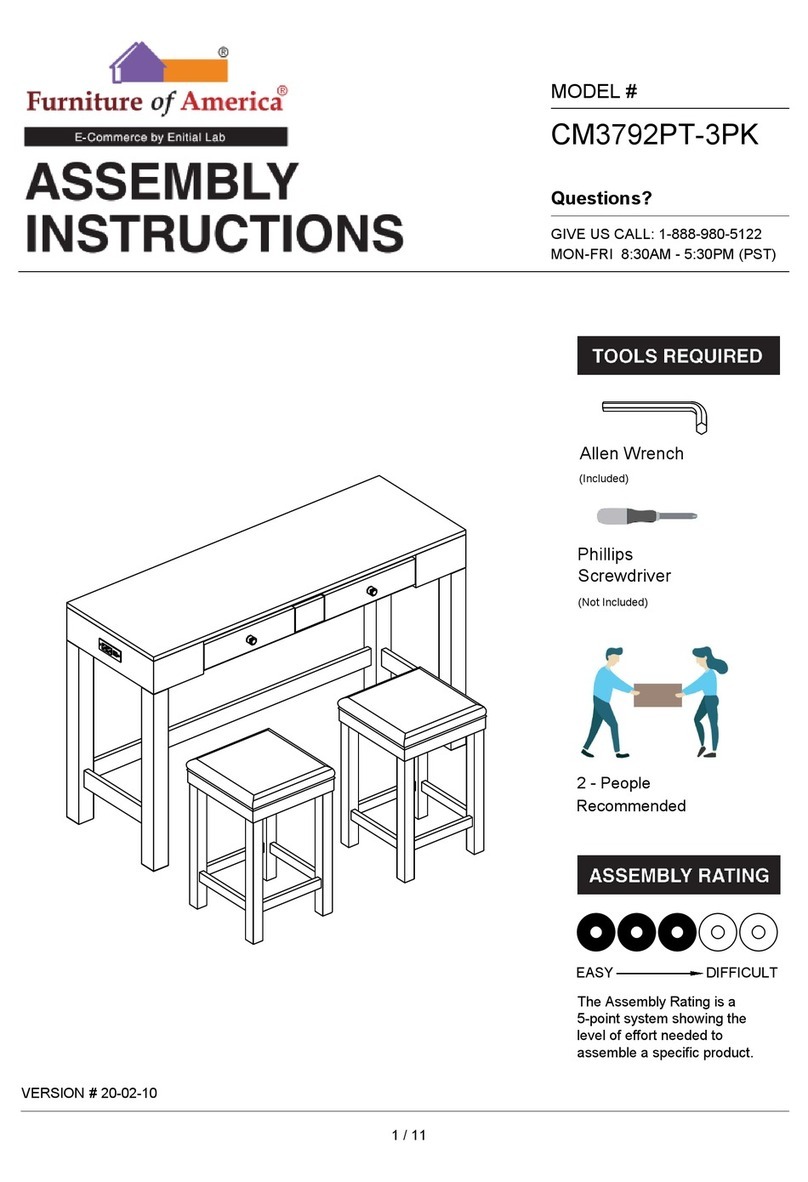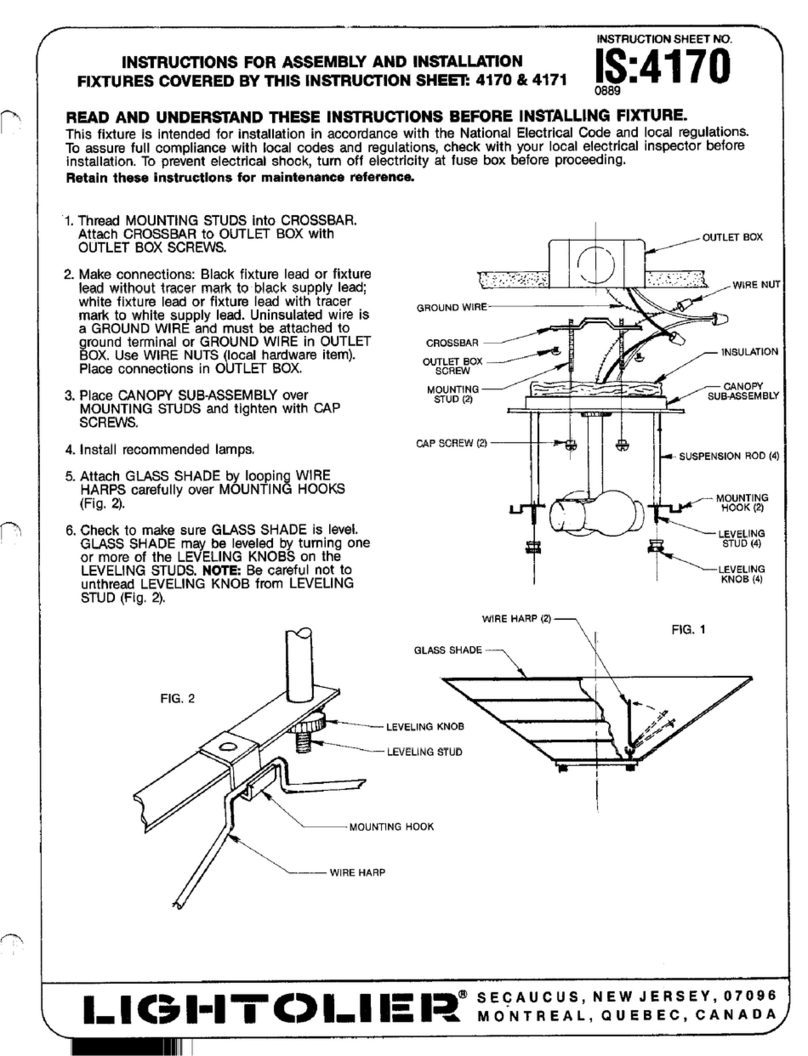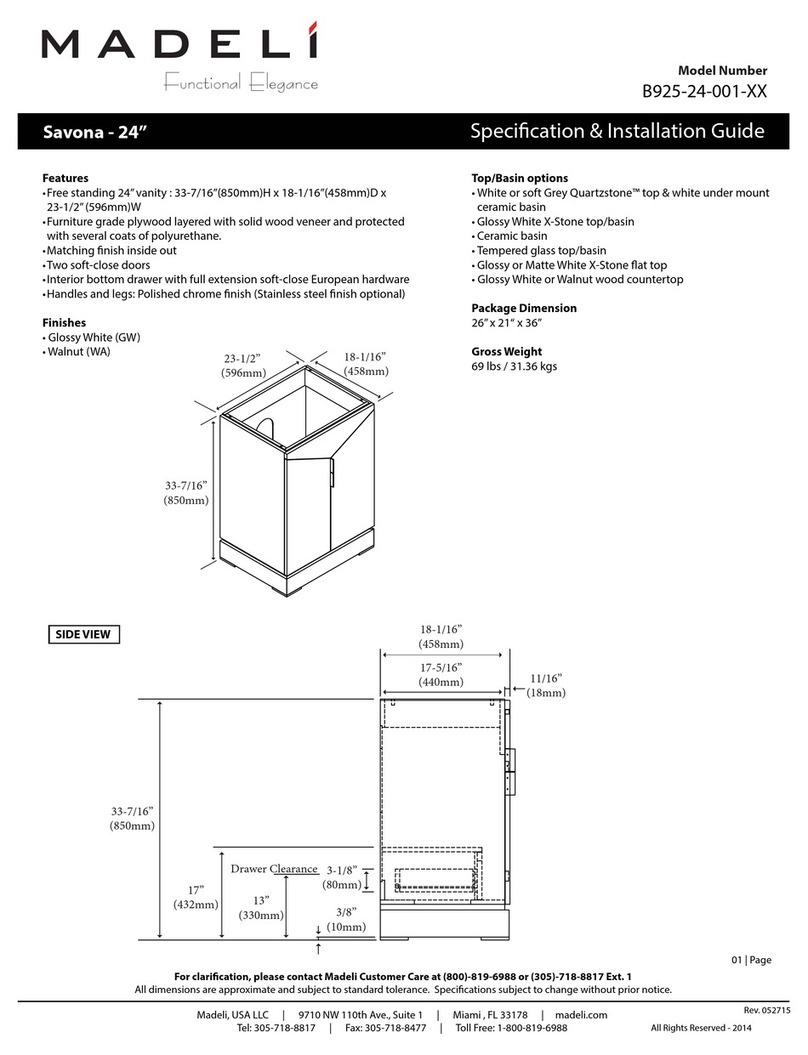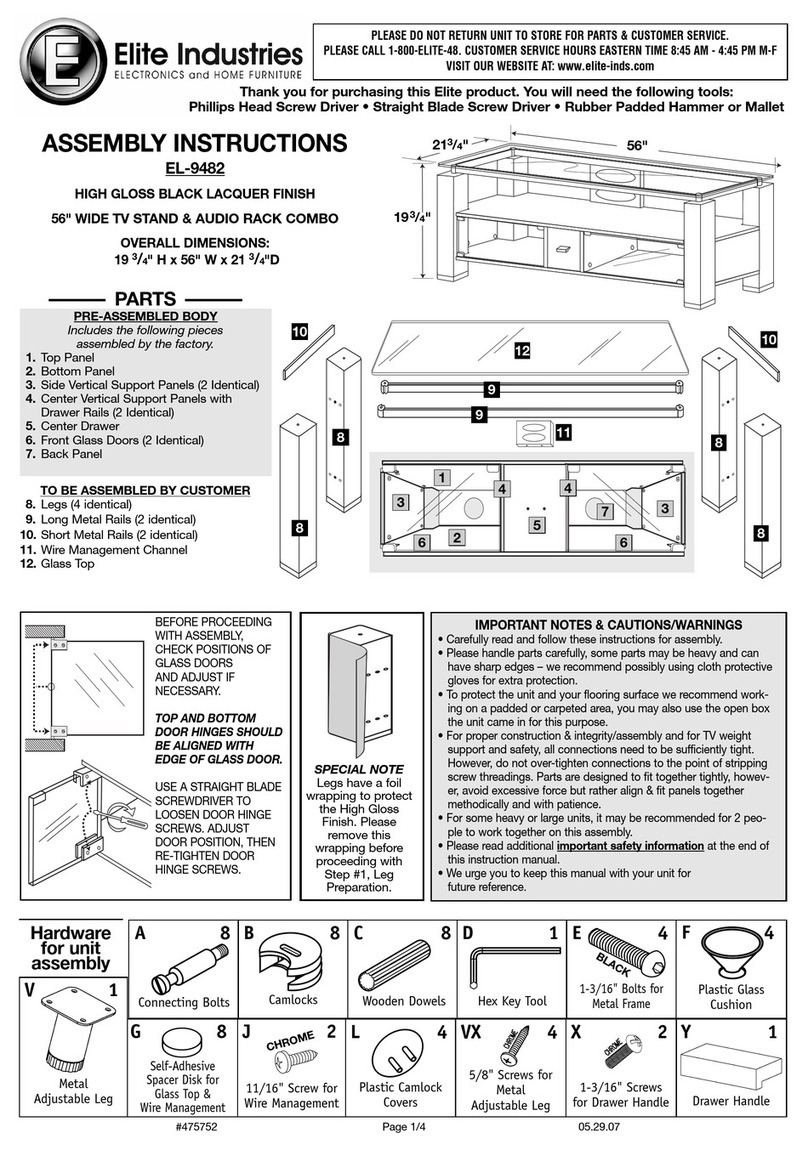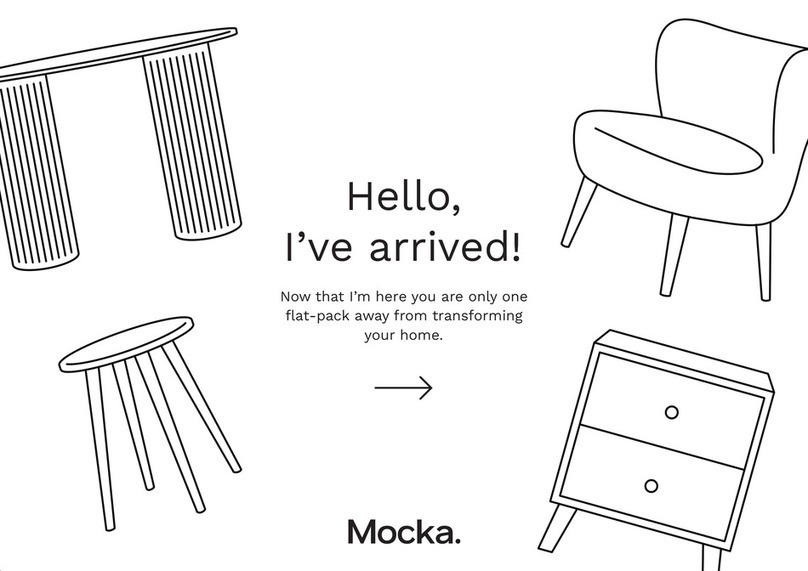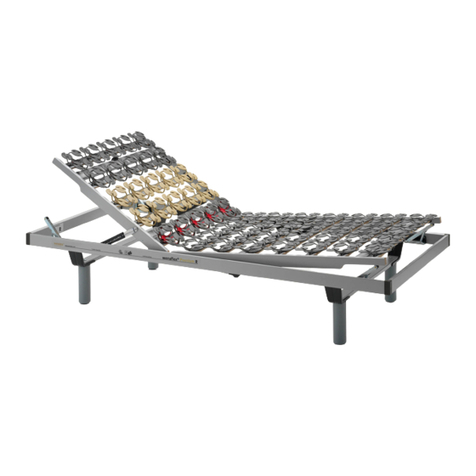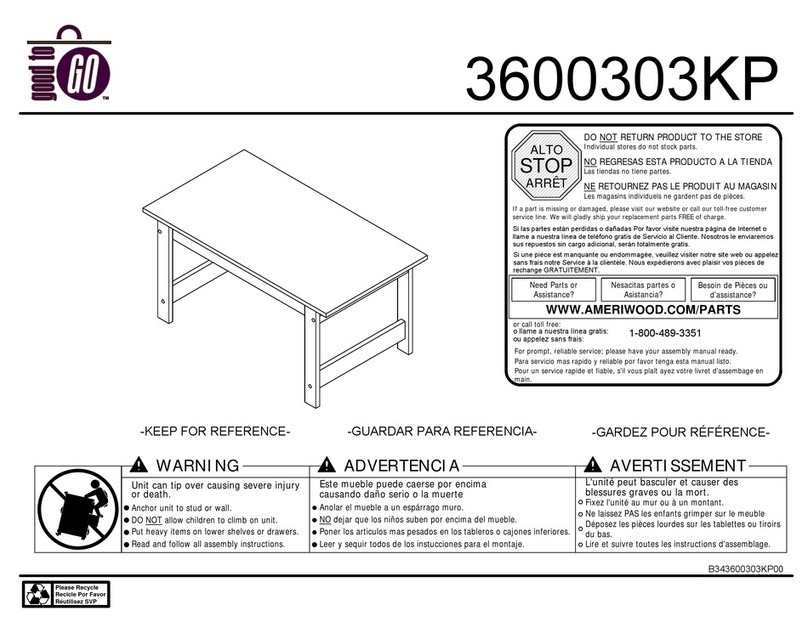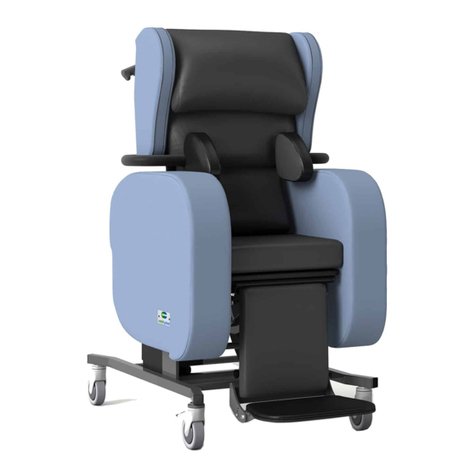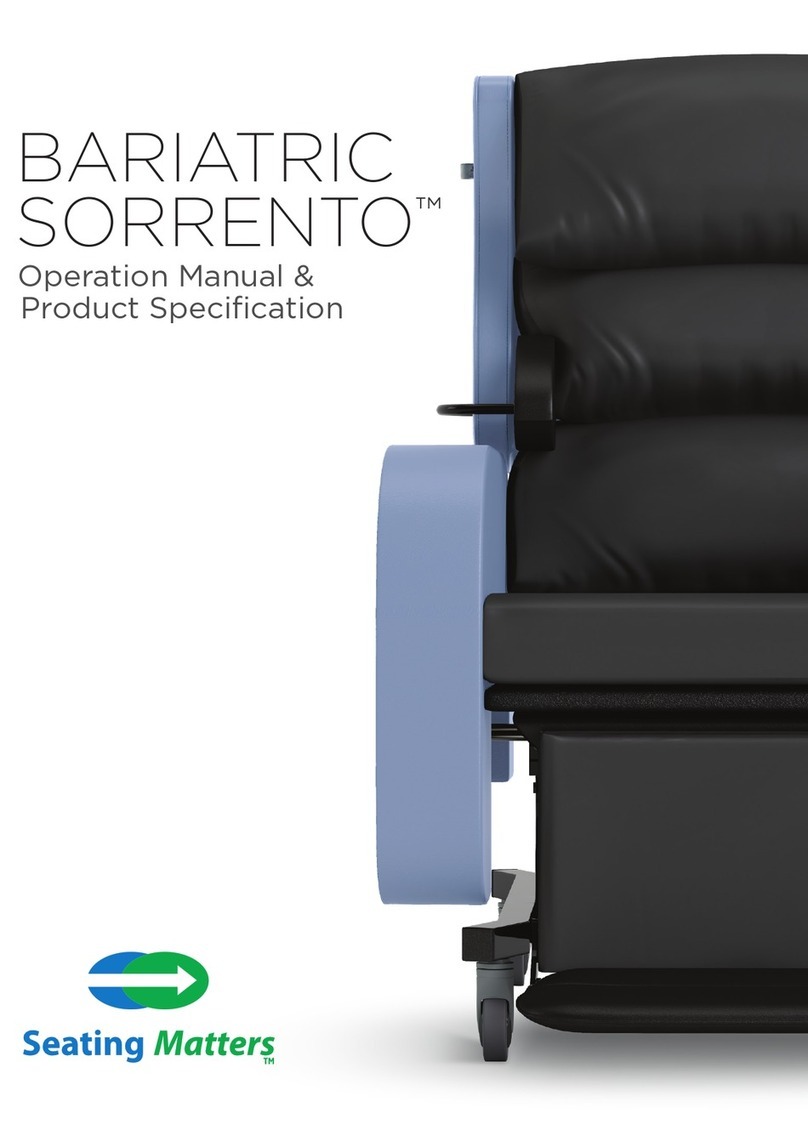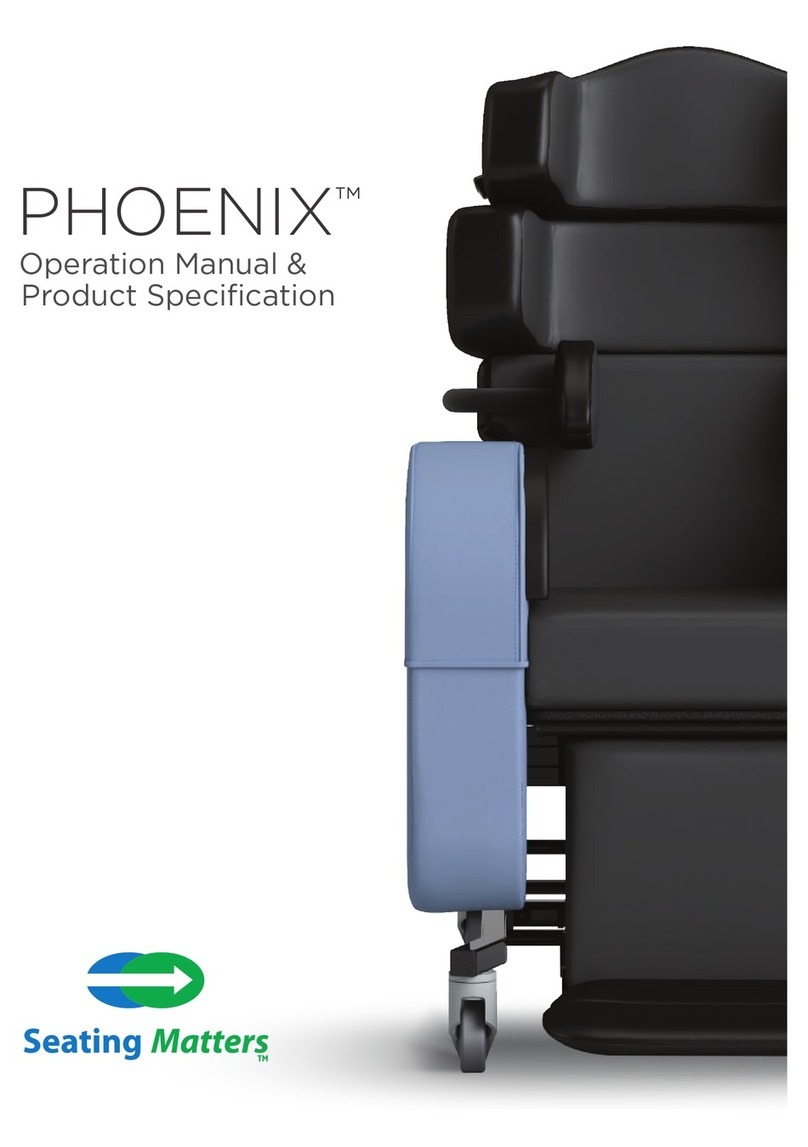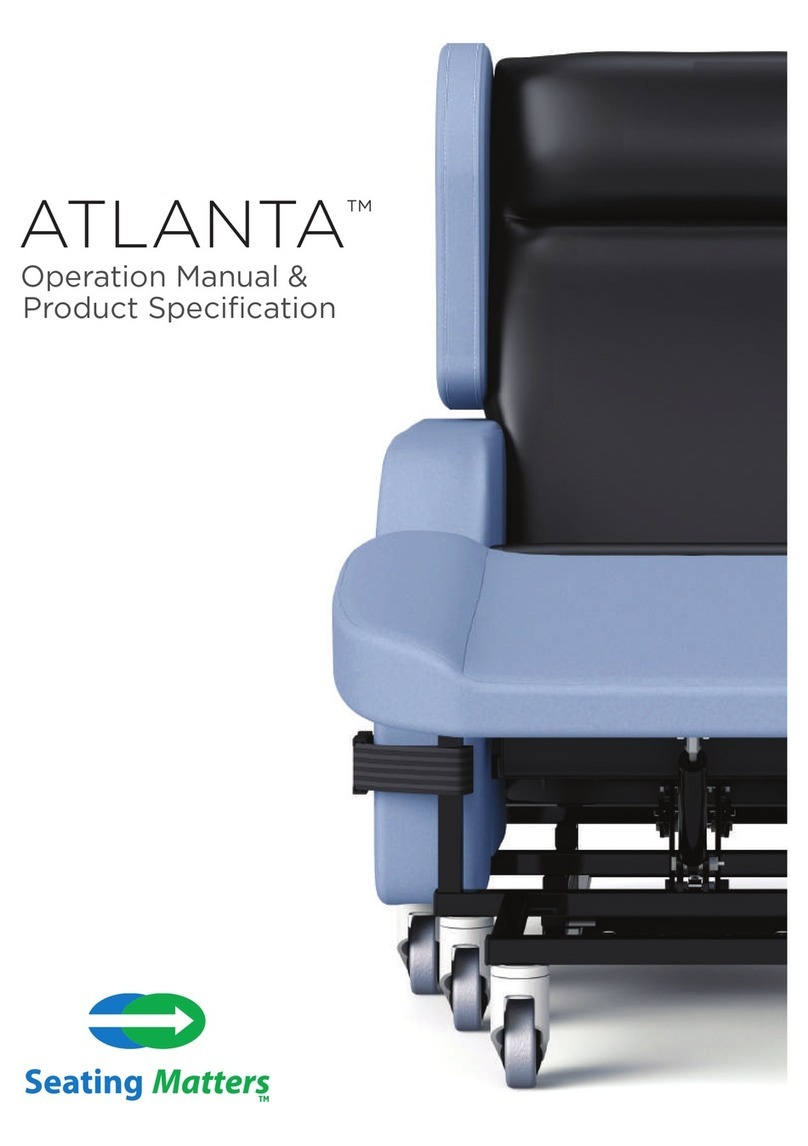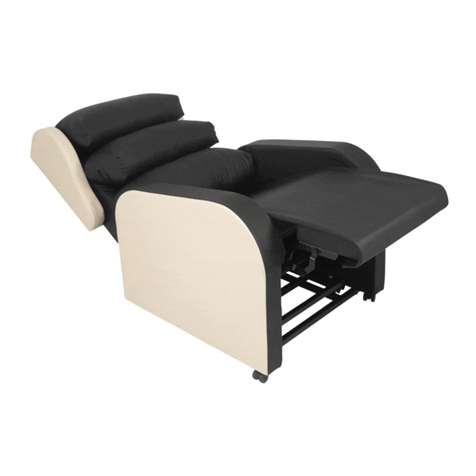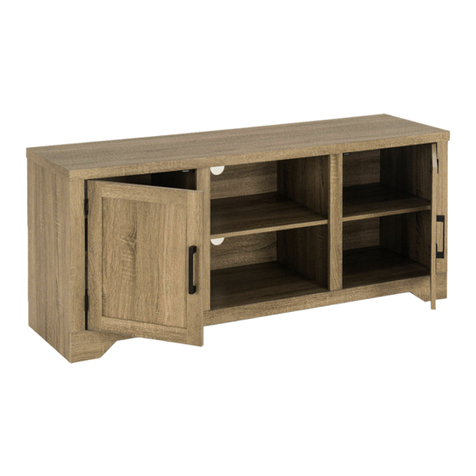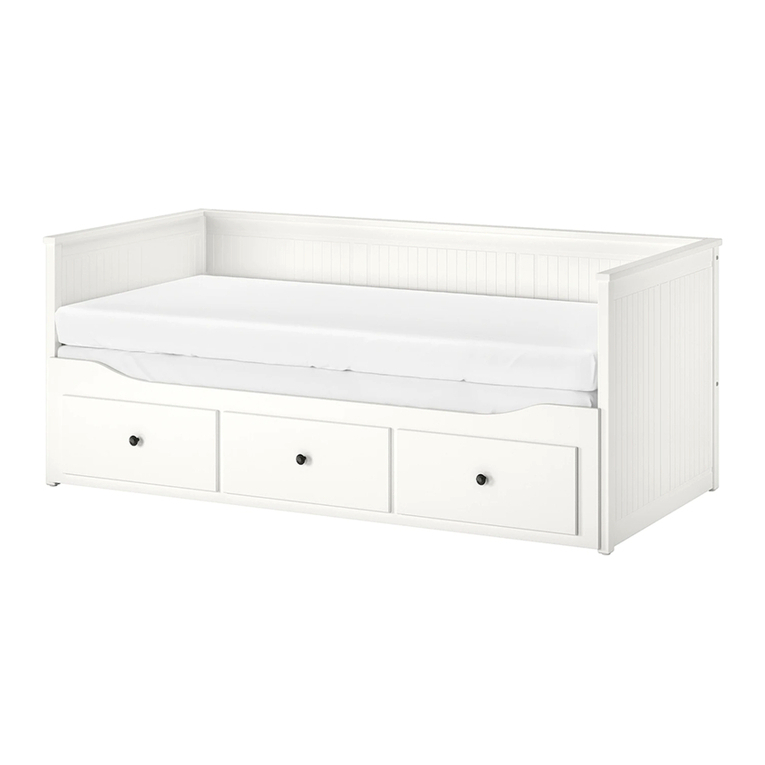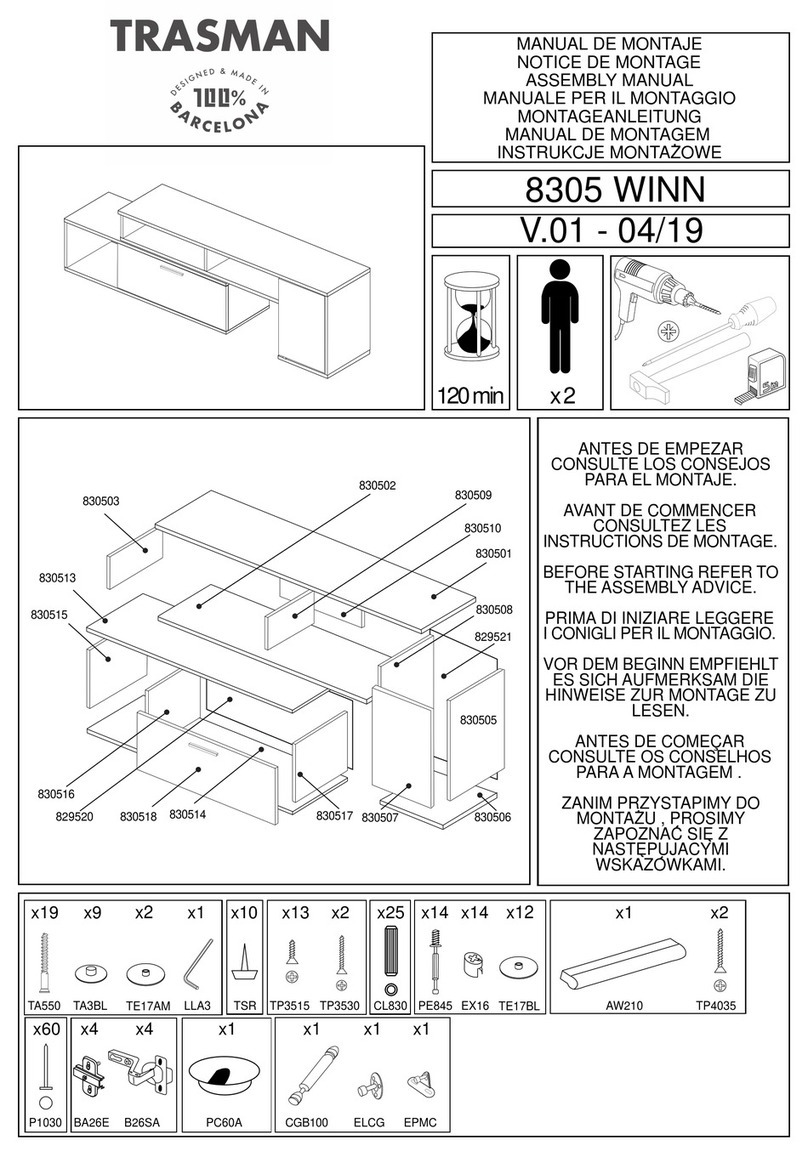
Assembly, Installation,
Warnings & Hazards
Safety
Instructions
Bariatric Sorrento
professional with regard to the use of
tilt and recline for appropriate pressure
management.
The product must be used on a level,
plain, hard surface with the brakes
engaged to avoid it moving during use
and to ensure stability. When the chair is
not in transit, all the braking castors on
the product must be engaged to prevent
risk of injury when being used.
The product may not be left in an
outdoor environment. More information
on fabrics and their environment can be
found later in this manual.
Ensure there is more than one competent
person there when making adjustments
to ensure they are correct and safe for
the Patient.
If in doubt as to any the adjustments, feel
free to contact Seating Matters direct at
technical@seatingmatters.com.
Under no circumstances must the User
or Patient stand or sit on the footplate of
the chair.
The chair should not be transported in a
vehicle while the Patient is seated on the
chair.
This product should not be lifted at any
time unless by competent persons trained
in such manual handling.
When operating the leg rest and recline
features on the chair please ensure there
is a 450mm gap around the chair to
prevent the back or leg rest coming into
contact with a wall or any other object.
On powered options, please ensure that
your chair is charged daily.
Please call your Seating Matters provider if you
have any questions on these points.
A competent person, or User, trained
in the use of the chair, who is either a
suitably qualified medical professional,
or is working under their guidance and
instruction, should make adjustments
and set up the product according to the
Patient requirements and dimensions
before the Patient sits in the chair. Where
possible, adjustments should be made
when the Patient is not in the chair to
avoid injury to the User and Patient.
This product, and its’ accessories, should
be used in accordance with local or
regional guidelines regarding the use of
such medical devices.
This chair should be fully assembled, all
fixings secured and the chair checked for
safety by a competent person before use.
The User must ensure that the product
is in good condition before use (check
all nuts and bolts are fastened, fabric
in good condition etc). If there are any
problems, these must be reported to your
Seating Matters provider and corrected
before the chair is put into use.
Keep all body parts away from the
mechanisms under the chair. Repairs and
maintenance should only be carried out
by fully trained technicians.
Exercise care in using the release lever
for the reclining mechanisms and
adjustments to avoid injury.
Pressure ulcer or pressure injury
reduction is not a guarantee with this
equipment. The User must ensure that
the Patient has a period out of the chair
after prolonged sitting to raise tissue
oxygenation levels. Although the chair
oers pressure management, the body
tissue still needs time to recover. In
many places, local or national guidelines
recommend a maximum of 2 hours sitting
at any one time. You must also observe
Patient specific recommendations
and guidelines as set by their health
14
15
16
11
12
13
10
9
8
7
6
5
4
3
2
1
All instructions
must be read and
understood before
the product
may be used.
Terminologies
Patient
The person sitting in the chair.
User
Competent person with responsibility for
the persons sitting in the chair as well as the
suitability of the equipment for the Patient.
The User is responsible for checking the chair
for faults during the course of its use.
03
















